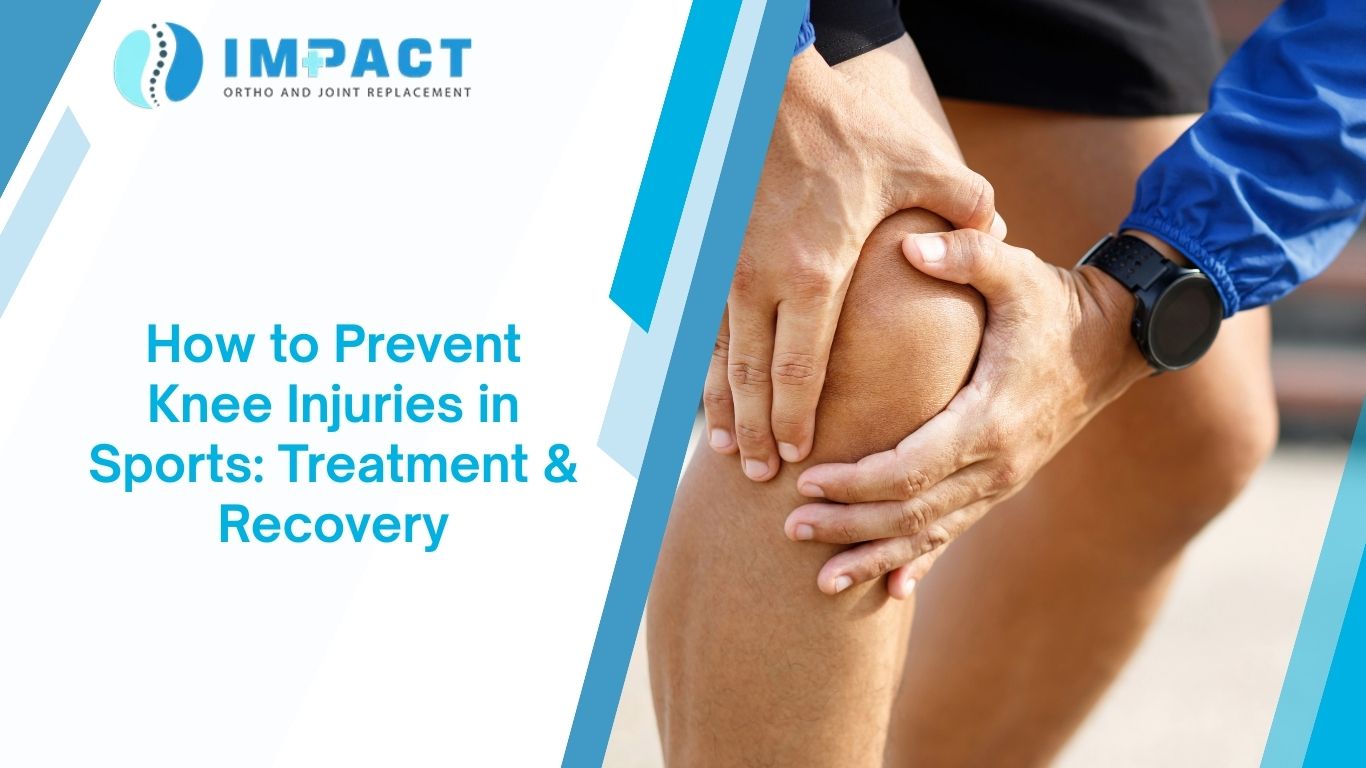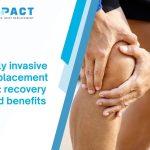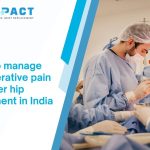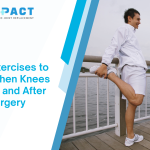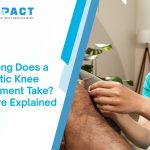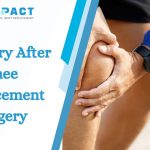You’re looking for an in-depth and personalized guide on How to Prevent Knee Injuries in Sports: Treatment & Recovery. For any athlete, or indeed anyone who enjoys physical activity, the knee is a vital and vulnerable joint. Protecting it is paramount to a long and active life. I’m here to walk you through comprehensive strategies for prevention, what to do if an injury strikes, and the journey of recovery, especially when seeking the expertise of the Best Sports Injury Doctor in India.
Let’s dive deep into the world of knee health in sports, equipping you with the knowledge to safeguard your knees and bounce back stronger if an injury occurs. This isn’t just about avoiding setbacks; it’s about optimizing your performance and ensuring you can continue to pursue your passion.
Safeguarding Your Game: How to Prevent Knee Injuries in Sports: Treatment & Recovery
My dear friend, if you’re an athlete, a weekend warrior, or simply someone who loves to stay active, you know the thrill of pushing your limits, the joy of movement, and the sting of a potential injury. Among all the joints in your body, the knee, while incredibly strong and complex, is also particularly susceptible to injury in sports. That jarring twist, awkward landing, or sudden impact can quickly put you on the sidelines. Understanding How to Prevent Knee Injuries in Sports: Treatment & Recovery is not just about avoiding pain; it’s about preserving your passion, maintaining your performance, and ensuring a long, active life.
This guide is designed to be your comprehensive playbook, offering actionable strategies for prevention, a clear understanding of initial responses to injury, and a detailed roadmap for effective treatment and robust recovery. Our goal is to empower you with the knowledge to protect your knees and get back in the game safely and strongly, especially when seeking the care of the Best Sports Injury Doctor in India.
Worried About Knee Injuries in Sports?
Sports injuries like ACL tears, ligament strains, and meniscus damage can affect performance. With expert treatment and recovery plans, you can protect your knees and get back in the game stronger.
Book Sports Injury ConsultationThe Knee: A Masterpiece of Engineering, A Target for Injury
Before we delve into prevention, let’s briefly appreciate the knee’s intricate design. It’s a hinge joint primarily, allowing bending (flexion) and straightening (extension), but it also permits some degree of rotation. This remarkable combination of stability and mobility is achieved by:
- Bones: The thigh bone (femur), shin bone (tibia), and kneecap (patella).
- Ligaments: Strong, elastic bands connecting bones to bones, providing stability. Key knee ligaments include:
- ACL (Anterior Cruciate Ligament): Prevents the tibia from sliding forward excessively and controls rotation.
- PCL (Posterior Cruciate Ligament): Prevents the tibia from sliding backward excessively.
- MCL (Medial Collateral Ligament): Stabilizes the inner side of the knee.
- LCL (Lateral Collateral Ligament): Stabilizes the outer side of the knee.
- Menisci: Two C-shaped pieces of cartilage (medial and lateral) that act as shock absorbers between the femur and tibia, also helping with stability.
- Tendons: Connect muscles to bones (e.g., patellar tendon, quadriceps tendon).
- Muscles: Surrounding muscles (quadriceps, hamstrings, calves) provide dynamic stability and power.
Given this complex structure, it’s easy to see why sudden twists, direct blows, or awkward landings in sports can cause significant damage.
Worried About Knee Injuries in Sports?
Sports injuries like ACL tears, ligament strains, and meniscus damage can affect performance. With expert treatment and recovery plans, you can protect your knees and get back in the game stronger.
Book Sports Injury ConsultationPart 1: How to Prevent Knee Injuries in Sports
Prevention is truly the best medicine. Implementing a proactive approach can drastically reduce your risk of knee injuries.
- Strength and Conditioning: Build a Robust Foundation:
- Balanced Muscle Strength: Focus on strengthening not just the quadriceps (front thigh), but equally important, the hamstrings (back thigh), glutes (buttocks), and calf muscles. Imbalances can lead to undue stress on the knee. Hamstrings, in particular, are crucial for protecting the ACL.
- Core Stability: A strong core (abdominal and lower back muscles) provides a stable base for all limb movements. A weak core means your legs have to work harder, putting more stress on the knees. Incorporate exercises like planks, bird-dog, and stability ball exercises.
- Hip Strength: Strong hip abductors and external rotators (muscles on the side and back of your hips) are vital for controlling knee alignment, especially during cutting, jumping, and landing. Weakness here can lead to “knee valgus” (knees collapsing inward), a major risk factor for ACL tears.
- Plyometrics and Agility Training: Incorporate controlled jumping, landing, and cutting drills to teach your body proper mechanics. Start with low-impact exercises and gradually progress. This trains your muscles to absorb impact effectively and react quickly.
- Proper Technique and Biomechanics: Move Smart:
- Landing Mechanics: Learn to land softly with knees bent, absorbing impact through your hips and glutes, rather than directly through your knees. Avoid landing with “locked” or straight knees.
- Cutting and Pivoting: When changing direction, keep your knees bent and avoid locking your knee or allowing it to collapse inward. Distribute weight evenly. Practice controlled pivots.
- Sport-Specific Training: Work with coaches or trainers to refine techniques specific to your sport (e.g., proper squat form in weightlifting, jumping and landing in basketball/volleyball, tackling in football/rugby).
- Flexibility and Mobility: Stay Supple:
- Dynamic Warm-ups: Before any activity, perform dynamic stretches (e.g., leg swings, torso twists, high knees) to increase blood flow and prepare muscles for movement.
- Static Stretching: After your workout, incorporate static stretches (holding a stretch for 20-30 seconds) for your quadriceps, hamstrings, calves, and hip flexors. Good flexibility ensures full range of motion without undue strain on ligaments.
- Foam Rolling: Use a foam roller to release tight muscles, particularly hamstrings, quads, and IT band, which can pull on the knee.
- Appropriate Footwear and Equipment:
- Sport-Specific Shoes: Wear shoes designed for your sport that provide adequate support, cushioning, and traction. Replace worn-out shoes regularly.
- Bracing (Selective): While not universally recommended for prevention in uninjured knees, certain braces may be advised for specific individuals with existing mild instability or during return to sport after injury, always under medical guidance.
- Nutrition and Hydration:
- Balanced Diet: Consume a diet rich in protein (for muscle repair), healthy fats (for joint health), and a wide array of vitamins and minerals.
- Hydration: Stay well-hydrated before, during, and after activity. Dehydration can affect muscle function and increase injury risk.
- Rest and Recovery:
- Adequate Sleep: Your body repairs itself during sleep. Chronic sleep deprivation can impair muscle recovery and increase injury susceptibility.
- Active Recovery: Light activities like walking or swimming on rest days can aid recovery by improving blood flow and reducing muscle soreness.
- Avoid Overtraining: Listen to your body. Pushing too hard without adequate rest can lead to overuse injuries, including those affecting the knee. Periodization in training helps manage load.
Worried About Knee Injuries in Sports?
Sports injuries like ACL tears, ligament strains, and meniscus damage can affect performance. With expert treatment and recovery plans, you can protect your knees and get back in the game stronger.
Book Sports Injury ConsultationPart 2: Treatment & Recovery: When an Injury Strikes
Despite all preventative measures, injuries can still happen. Knowing how to react immediately and what the treatment and recovery process entails is crucial.
Initial Response: The R.I.C.E. Protocol (First Aid)
For minor knee injuries (sprains, strains, contusions), the R.I.C.E. protocol is your immediate go-to:
- R – Rest: Stop the activity immediately. Avoid putting weight on the injured knee.
- I – Ice: Apply ice packs to the injured area for 15-20 minutes every 2-3 hours. This helps reduce swelling and pain. Use a cloth barrier between the ice and skin.
- C – Compression: Gently wrap the knee with an elastic bandage to help control swelling. Don’t wrap too tightly, as it can cut off circulation.
- E – Elevation: Keep the injured knee elevated above heart level, especially when resting, to reduce swelling.
When to See a Doctor (and potentially the Best Sports Injury Doctor in India):
While R.I.C.E. is great for initial management, some symptoms demand immediate professional medical attention:
- Severe pain that prevents weight-bearing.
- Obvious deformity of the knee.
- Significant swelling that appears rapidly.
- A “pop” or “snap” heard at the time of injury.
- Feeling of instability or the knee “giving way.”
- Inability to bend or straighten the knee fully.
- Numbness or tingling in the foot below the knee.
For these situations, seeking the expertise of the Best Sports Injury Doctor in India is paramount. A specialist can accurately diagnose the injury and guide the most effective treatment plan.
Diagnosis: Understanding Your Injury
At a leading center like Impact Ortho, the diagnostic process for a knee injury will typically involve:
- Detailed History: The doctor will ask about how the injury occurred, your symptoms, and your activity level.
- Physical Examination: A thorough examination of the knee to assess pain, swelling, range of motion, stability (ligament tests), and tenderness.
- Imaging Tests:
- X-rays: To rule out fractures.
- MRI (Magnetic Resonance Imaging): The gold standard for visualizing soft tissues like ligaments (ACL, PCL, MCL, LCL), menisci, cartilage, and tendons.
- Ultrasound: Can be used for some soft tissue injuries, especially tendons.
Treatment Options: Tailored to Your Needs
Treatment for knee injuries varies widely based on the specific injury, its severity, your age, activity level, and goals.
1. Non-Surgical Treatment (Conservative Management): Many knee injuries, especially mild to moderate sprains (e.g., MCL strains), some meniscus tears, and tendinitis, can be successfully managed without surgery.
- R.I.C.E. Protocol: Continues to be important.
- Medications: Over-the-counter or prescription NSAIDs (Non-Steroidal Anti-Inflammatory Drugs) to reduce pain and inflammation.
- Physical Therapy (Physiotherapy): Crucial for almost all knee injuries, surgical or non-surgical. A physical therapist will design a personalized program to:
- Reduce pain and swelling.
- Restore full range of motion.
- Strengthen the muscles around the knee (quadriceps, hamstrings, glutes) and core.
- Improve proprioception (your body’s sense of position), balance, and neuromuscular control.
- Guide a gradual return to sport, including agility drills and sport-specific training.
- Bracing: May be used to provide support and stability during healing, or to restrict certain movements.
- Injections:
- Corticosteroid Injections: To reduce inflammation in cases of tendinitis or bursitis.
- Platelet-Rich Plasma (PRP) Injections: May be considered for certain tendon or ligament injuries to promote healing, though evidence varies.
- Hyaluronic Acid Injections: For knee osteoarthritis, to lubricate the joint.
2. Surgical Treatment: Surgery is typically reserved for severe injuries, such as complete ligament tears (especially ACL), certain types of meniscus tears (where repair is possible), severe cartilage damage, or unstable fractures.
- ACL Reconstruction: Often performed arthroscopically, using a graft (from your own body or a donor) to replace the torn ACL.
- Meniscus Repair/Meniscectomy: Repairing a torn meniscus if possible (suturing it back together) or removing the damaged portion (meniscectomy) if repair isn’t feasible.
- Ligament Repairs (e.g., MCL, LCL): Sometimes repaired directly, or reconstructed in complex cases.
- Cartilage Repair/Restoration Procedures: For damaged articular cartilage (e.g., microfracture, OATS procedure, autologous chondrocyte implantation).
- Fracture Fixation: Surgically repairing broken bones around the knee.
Modern knee surgeries are often minimally invasive (arthroscopic), leading to smaller incisions, less pain, and potentially faster initial recovery. When you seek the Best Sports Injury Doctor in India, you can expect access to these advanced surgical techniques.
Worried About Knee Injuries in Sports?
Sports injuries like ACL tears, ligament strains, and meniscus damage can affect performance. With expert treatment and recovery plans, you can protect your knees and get back in the game stronger.
Book Sports Injury ConsultationThe Recovery Journey: Rehabilitation is Key
Whether your treatment is surgical or non-surgical, rehabilitation is the longest and most critical phase of your recovery. It’s not just about healing; it’s about rebuilding strength, stability, and confidence.
Phases of Rehabilitation:
- Acute/Protection Phase (Days to Weeks): Focus on reducing pain and swelling, protecting the injured area, and restoring basic range of motion. This involves R.I.C.E., gentle exercises, and partial weight-bearing.
- Intermediate/Restoration Phase (Weeks to Months): Gradually increase range of motion, start strengthening exercises (isometric, then isotonic), improve balance, and begin light functional movements. The physical therapist will guide progression.
- Advanced/Return to Activity Phase (Months): Focus on advanced strengthening, plyometrics, agility drills, and sport-specific training. This phase emphasizes neuromuscular control, power, and building confidence in dynamic movements. It involves rigorous testing to ensure the knee is ready for the demands of the sport.
- Maintenance Phase (Ongoing): Even after returning to sport, continue a maintenance exercise program to prevent re-injury and sustain strength and flexibility.
Key Principles of Rehabilitation:
- Consistency: Adhering to your physical therapy program diligently is non-negotiable.
- Patience: Healing takes time. Don’t rush the process, even if you feel good. Premature return to sport is a major risk factor for re-injury.
- Listen to Your Body: Respect pain. Push gently, but stop if you feel sharp or increasing pain.
- Communication: Maintain open communication with your physical therapist and doctor.
- Mental Toughness: Recovering from a knee injury can be mentally challenging. Stay positive, set realistic goals, and celebrate small victories.
Long-Term Prevention After Injury
Even after a successful recovery, vigilance remains key. Your previous injury can make you more susceptible to re-injury. Continue to prioritize:
- Ongoing Strength Training: Maintain the strength and balance you built during rehab.
- Proper Warm-up and Cool-down: Make it a non-negotiable part of every workout.
- Sport-Specific Conditioning: Keep your body conditioned for the demands of your sport.
- Listen to Your Body: Pay attention to any new aches or pains and address them early.
- Regular Check-ups: Consider periodic check-ups with your orthopedist or physical therapist, especially if you’re engaging in high-impact sports.
Why Choose Impact Ortho for Your Knee Injury Needs?
When it comes to How to Prevent Knee Injuries in Sports: Treatment & Recovery, you need a team that combines expertise, experience, and cutting-edge resources. Impact Ortho is dedicated to providing comprehensive care for athletes and active individuals. Their specialists are highly skilled in diagnosing and treating a wide range of knee injuries, from conservative management to advanced surgical techniques. With a focus on personalized rehabilitation, Impact Ortho aims not just to heal your injury, but to optimize your return to sport safely and effectively. They truly embody the qualities you’d expect from the Best Sports Injury Doctor in India.
Worried About Knee Injuries in Sports?
Sports injuries like ACL tears, ligament strains, and meniscus damage can affect performance. With expert treatment and recovery plans, you can protect your knees and get back in the game stronger.
Book Sports Injury ConsultationFAQs: Your Questions About Knee Injuries in Sports Answered
Here are some frequently asked questions that many athletes and active individuals have regarding How to Prevent Knee Injuries in Sports: Treatment & Recovery, especially when looking for the Best Sports Injury Doctor in India:
Is knee bracing effective for preventing injuries in healthy athletes?
For healthy, uninjured athletes, evidence generally doesn’t support the routine use of knee bracing for prevention. Instead, focus on a comprehensive strength, conditioning, and proprioception program. Braces are typically used for rehabilitation after an injury or surgery, or for specific individuals with pre-existing instability, always under a doctor’s guidance.
How long does it usually take to recover from an ACL tear?
Recovery from an ACL tear, especially if it requires surgical reconstruction, is a significant journey. Typically, it takes 6 to 9 months, or even up to a year, for a full return to high-level sports. This extensive timeline is due to the biological healing process of the graft and the necessary time to regain strength, neuromuscular control, and confidence. Rushing the return to play is the biggest risk factor for re-tearing the ACL.
What’s the difference between an MCL and an ACL tear, and which is worse?
The MCL (Medial Collateral Ligament) is on the inside of the knee and often injured by a direct blow to the outside of the knee. MCL tears frequently heal well with non-surgical treatment (rest, bracing, physical therapy). The ACL (Anterior Cruciate Ligament) is inside the knee joint and prevents the shin bone from sliding too far forward. ACL tears often occur from sudden twisting or landing awkwardly without direct contact and typically require surgery for athletes to return to cutting and pivoting sports. Generally, an ACL tear is considered a more severe injury for an athlete due to its impact on knee stability and the extensive recovery required.
Can I still play sports with a meniscus tear?
It depends on the type, size, and location of the meniscus tear, as well as your symptoms. Some small tears, especially in the outer, blood-supplied part of the meniscus, may heal with rest and physical therapy. Other tears, particularly those causing locking, catching, or persistent pain, often require surgical repair or removal of the damaged portion. Playing on a symptomatic meniscus tear can worsen the damage and potentially lead to early osteoarthritis. Always consult a specialist like the Best Sports Injury Doctor in India for diagnosis and guidance.
How important is physical therapy after a knee injury, even if it’s not surgical?
Physical therapy is crucial, whether or not you have surgery. For non-surgical injuries, it’s the primary path to healing, restoring strength, and preventing recurrence. For surgical cases, it’s essential for regaining range of motion, muscle strength, balance, and the specific mechanics needed for your sport. Skipping or rushing physical therapy significantly increases your risk of poor outcomes and re-injury.
What role does technique play in preventing knee injuries in sports like basketball or football?
Technique is paramount. In sports involving jumping, cutting, and pivoting, improper landing mechanics (e.g., stiff-legged landing, knees caving inward), or inefficient cutting movements (e.g., planting with a straight leg) place tremendous stress on the knee ligaments and menisci. Sport-specific technique training, often incorporating plyometrics and agility drills with a focus on safe movement patterns, is a cornerstone of injury prevention in these dynamic sports.
Taking care of your knees is an investment in your athletic longevity and overall well-being. By embracing preventive strategies and knowing how to navigate How to Prevent Knee Injuries in Sports: Treatment & Recovery, you’re empowering yourself to stay active and healthy. Remember, for expert guidance and comprehensive care, the team at Impact Ortho is your reliable partner, striving to be the Best Sports Injury Doctor in India for your needs.

